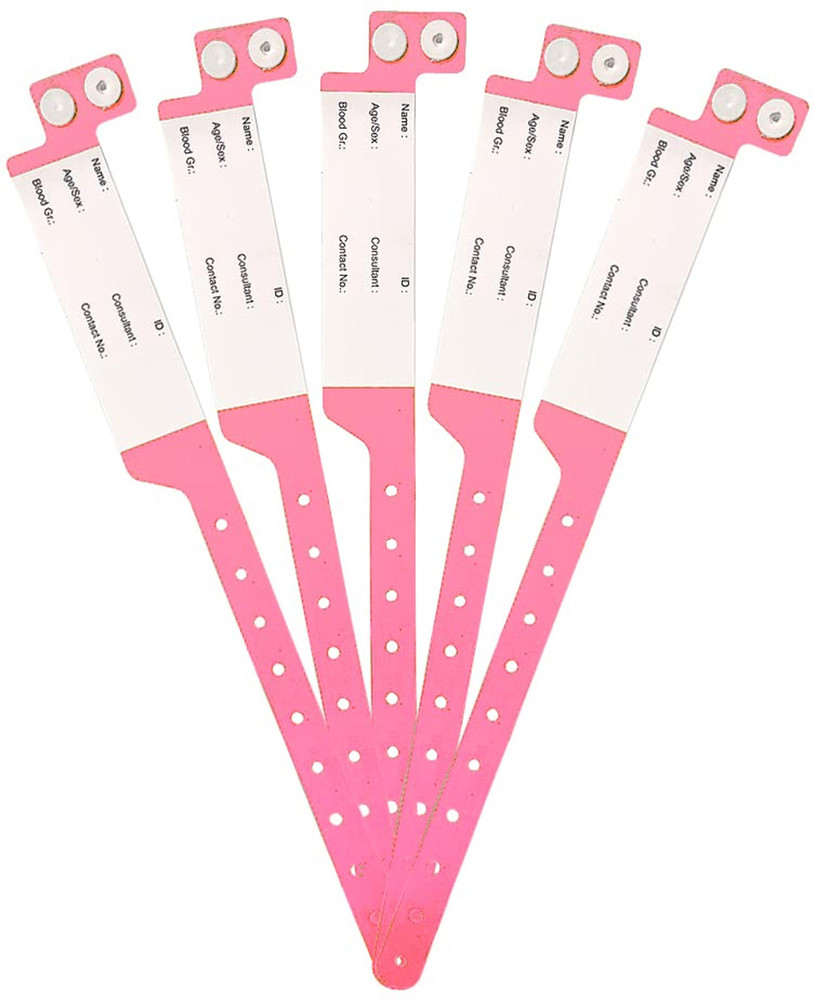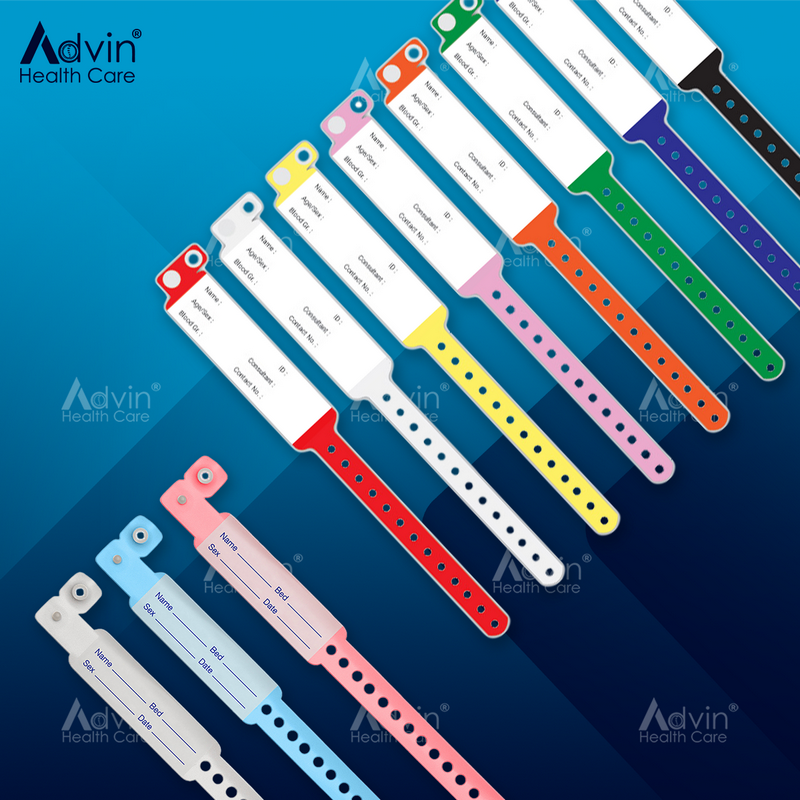Understanding the Innovative Advancements Behind the Patient Identification Band
Understanding the Innovative Advancements Behind the Patient Identification Band
Blog Article
Exploring the Different Types of Patient Identification Band Utilized in Clinical Facilities
In the elaborate globe of health care, the important role of Patient Identification bands typically goes unnoticed. These bands, differing from easy paper wristbands to advanced RFID bands, develop the backbone of Patient security methods, making sure precision in Patient Identification.
Recognizing the Significance of Patient Identification Bands
While they might seem like mere accessories, Patient Identification bands play an essential role in clinical centers. These bands function as a vital device for validating Patient identity, preventing medical errors connected to misidentification. The bands normally show vital details such as the Patient's name, age, blood type, and any known allergic reactions. They permit healthcare experts to promptly access this important information, thus helping with timely and precise medical therapy. Patient Identification bands additionally aid in enhancing administrative jobs, ensuring accurate record-keeping and payment. Regardless of their simpleness, these bands symbolize the principle of Patient safety, a foundation of high quality healthcare. Without them, the danger of medical errors, and as a result, Patient harm, might significantly increase.
Traditional Paper Wristbands: Their Usage and Limitations
Typical paper wristbands have been a staple in Patient Identification throughout different clinical facilities. While their usage is prevalent, they harbor specific constraints that may influence their effectiveness in Patient administration. This section will certainly concentrate on the scope of their application and the inherent downsides associated with their use.
Paper Wristbands: Use Extent
In the world of Patient Identification, paper wristbands have long held an essential duty. These bands are typically made use of in outpatient setups, where the Patient's remain is momentary. The wristbands include necessary info such as the Patient's name, day of birth, and a special Identification number. This straightforward, yet reliable system, allows medical specialists to promptly and accurately determine clients, guaranteeing the appropriate treatment is provided. Paper wristbands are additionally used in emergency situation scenarios, where rapid Identification is vital. Their use reaches occasions like blood donation drives and mass inoculation programs, better stressing their flexibility. In spite of developments in technology, the humble paper wristband remains a affordable and trustworthy solution for Patient Identification in numerous medical care circumstances.
Limitations of Paper Wristbands
In spite of their prevalent usage, paper wristbands are not without their downsides. In addition, paper wristbands commonly do not have the technological capabilities of even more modern-day options, such as barcoding or RFID chips, restricting their functionality to simply presenting written details. Paper wristbands can create discomfort or skin irritation to some patients, specifically when put on for extensive periods.
Barcoded Wristbands: Improvements in Patient Identification
While Patient Identification has long been an essential aspect of medical care, the arrival of barcoded wristbands represents a significant leap onward. These bands utilize the simplicity of barcoding modern technology, enabling Patient info to be quickly scanned and accessed. They improve the speed and accuracy of Patient Identification, reducing the risk of clinical errors connected to misidentification. Barcoded wristbands are cost-effective, easy to produce, and get official statement rid of handwriting errors common with manual systems. Nonetheless, they are not without constraints. While they supply enhancements over typical bands, the barcode can end up being smudged or used, making it unreadable. Despite this, barcoded wristbands remain a vital device in modern health care setups, symbolizing the intersection of modern technology and Patient treatment.
Radio Frequency Identification (RFID) Bands: a Step In The Direction Of Futuristic Medical Care
The development of Patient Identification bands has caused the emergence of Radio Frequency Identification (RFID) Bands (patient identification band). These cutting-edge tools present vital benefits for medical care centers, supplying a more reliable and technologically advanced means of Patient Identification. The application of RFID in medical care is a substantial step towards a more futuristic approach to Patient monitoring and safety and security
Understanding RFID Bands

RFID Bands: Trick Advantages
Primarily, these bands improve Patient security by supplying exact, rapid Identification, thereby lowering clinical errors. RFID bands can store a huge quantity of Patient information, consisting of clinical history and allergic reactions, enabling personalized care. Generally, RFID bands represent a substantial improvement in Patient Identification innovation, profiting both clients and healthcare companies.
Implementing RFID in Healthcare
As we tip into a highly sophisticated age, the execution of RFID bands in healthcare becomes progressively crucial. These bands offer a seamless method to track and identify clients, ensuring their safety and enhancing effectiveness in treatment procedures. RFID bands use numerous advantages over conventional Identification techniques. They can save a huge browse around this web-site quantity of information, including the Patient's clinical background and treatment strategies, which can be easily accessed by medical care carriers. This data helps physicians make notified choices relating to the Patient's treatment strategy. RFID bands minimize medical errors by giving precise Patient Identification, which is essential in preventing misdiagnosis or incorrect medicine management. Thus, the implementation of RFID bands is a substantial step towards improving Patient security and healthcare shipment.

Color-Coded Wristbands: Helping in Quick and Accurate Diagnosis
In the dynamic atmosphere of a clinical facility, color-coded wristbands have arised as important tools for swift and specific Identification of a person's clinical condition. These wristbands, worn by clients, bring particular colors that correspond to different clinical problems or conditions. This system is created to supply instant aesthetic signs to medical care providers, boosting Patient security and care quality.
Methods for Efficient Application and Monitoring of Patient ID Bands
Accomplishing optimum usage of Patient Identification bands requires a well-structured technique for their implementation and monitoring. Patient education and learning is also essential; people must understand the function of the bands and the demand for their continuous wear. It's important to have a back-up strategy in place, such as barcode scanning or biometrics, to make sure that Patient Identification is never ever endangered.
Final thought
Patient Identification bands are important in clinical facilities to make sure safety and security and accuracy. click this link Effective execution and administration of these bands can considerably reduce medical errors, improve performance, and improve general Patient treatment.
These bands, differing from easy paper wristbands to innovative RFID bands, develop the backbone of Patient safety and security procedures, making sure accuracy in Patient Identification.The development of Patient Identification bands has actually brought concerning the introduction of Radio Frequency Identification (RFID) Bands. Generally, RFID bands stand for a significant innovation in Patient Identification technology, benefiting both clients and health care providers.
RFID bands reduce medical mistakes by supplying accurate Patient Identification, which is crucial in avoiding misdiagnosis or wrong medicine administration. Patient education is additionally critical; people have to recognize the purpose of the bands and the need for their consistent wear.
Report this page